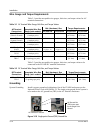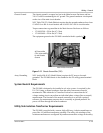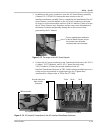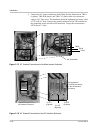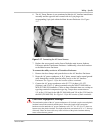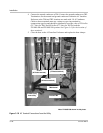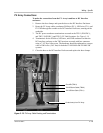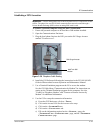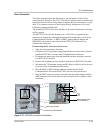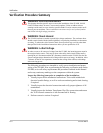
Installation
3–20 152315 Rev C
PC Communications
Personal computers can be used to access the system status and programming
features of the PV100S. A computer can be connected either directly or remotely.
1. Remote Connect - uses one of the three kits below.
• POTS Kit - uses a MultiTech® 56K Modem, RS232/Fiber Optic
Converter (configured for ethernet) and SA2 Surge Arrestor and requires
access to a local analog phone line (Plain Old Telephone Service-POTS).
• Wireless Kit - uses a GSM Wireless Modem to access wireless phone
service.
• Ethernet LAN Kit - uses a data communication device to enable the unit
to connect to a local area network.
2. Direct Connect - This method is used for troubleshooting. It uses a
RS232/Fiber Optic Converter (configured for a PC), a DB25-to-DB25 gender
changer, and a DB25-to-DB9 Serial Cable.
Software is included to provide a graphic user interface that relates important
system information. This software is called Xantrex Solar Graphic Interface
(GUI). See "Computer Communications with the PV100S" in the PV100S 100
kW Grid-tied Photovoltaic Inverter Operation and Maintenance Manual for
additional information.
The GUI can dial up the inverter and receive fault report calls from it through a
standard Hayes-compatible, landline modem. When the GUI initiates a call
through the modem at the GUI computer, the inverter’s modem answers the call
and initiates a 9600 baud serial connection, effectively as if the GUI was
connected directly. Or, if the inverter experiences a fault, it will initiate a call to
the GUI and report the fault details.
PC Connection Methods
The personal computer can be connected to the PV100S the following ways.
• POTS Connection
• Wireless Connection
• Ethernet LAN Connection
• Direct Connection
Important:
Ensure the appropriate service has been established before proceeding.
Also ensure the personal computer to be used has the appropriate hardware to support the
installed feature, such as a phone line, wireless phone service, or local area network.



